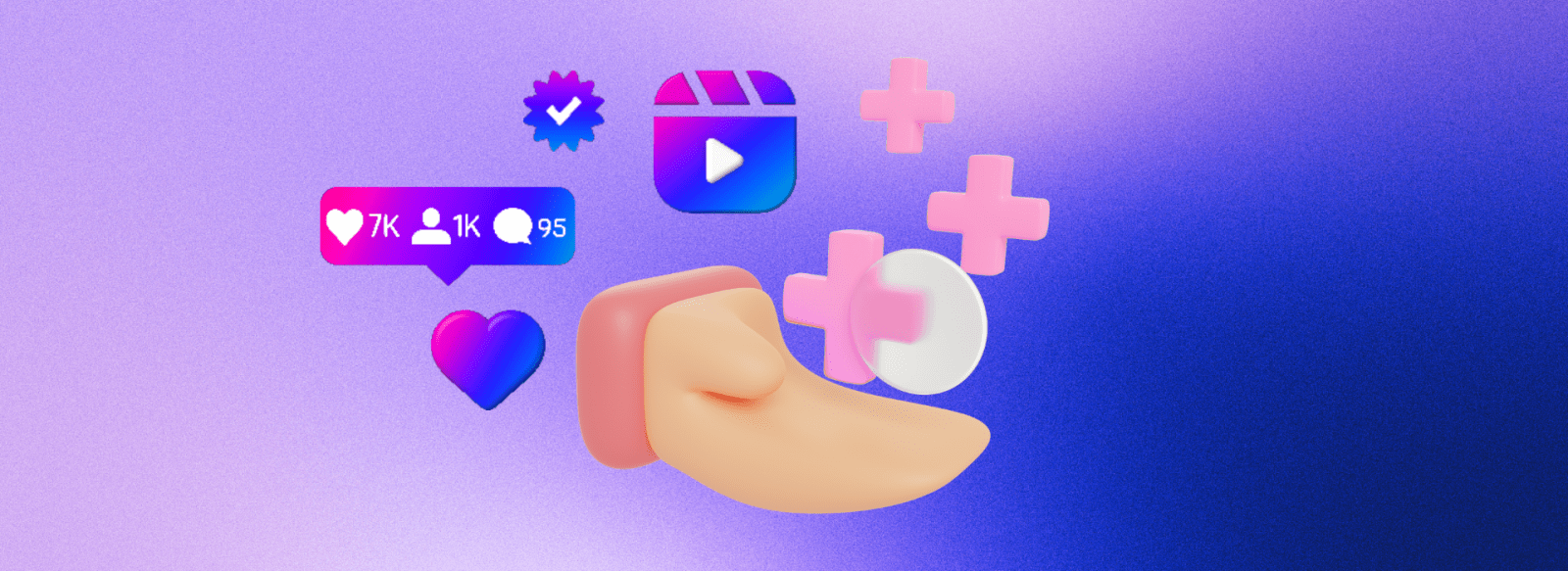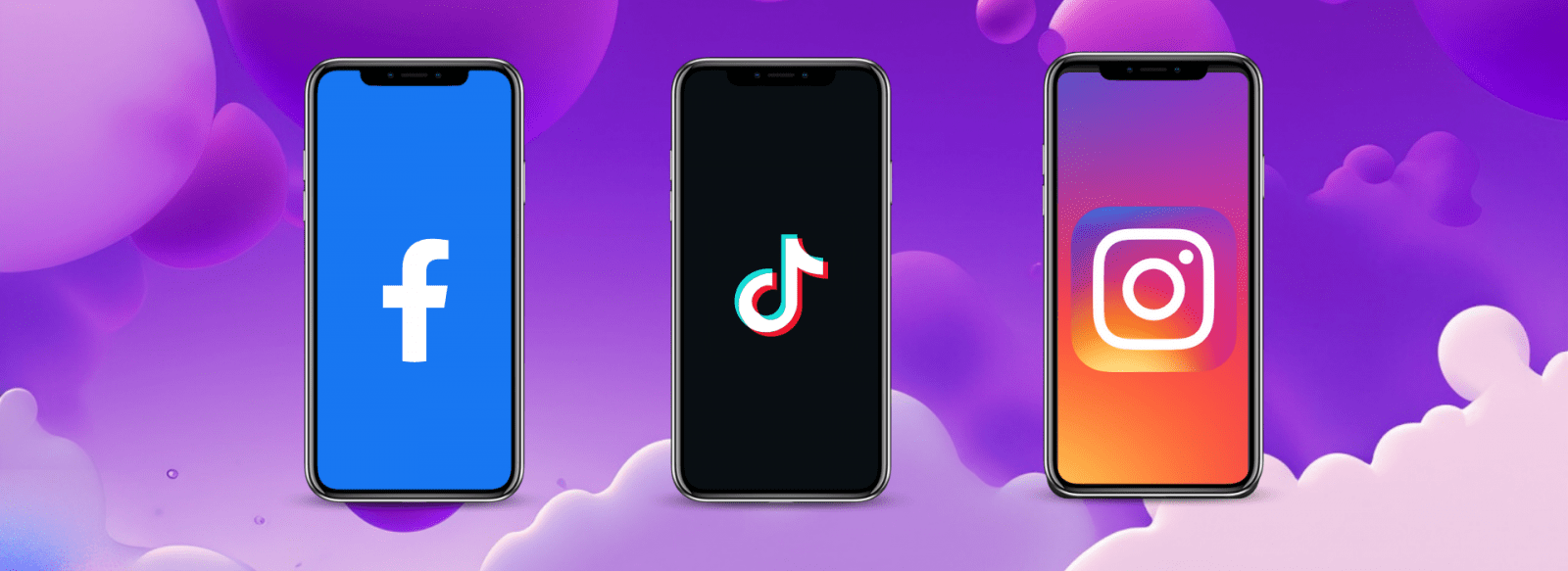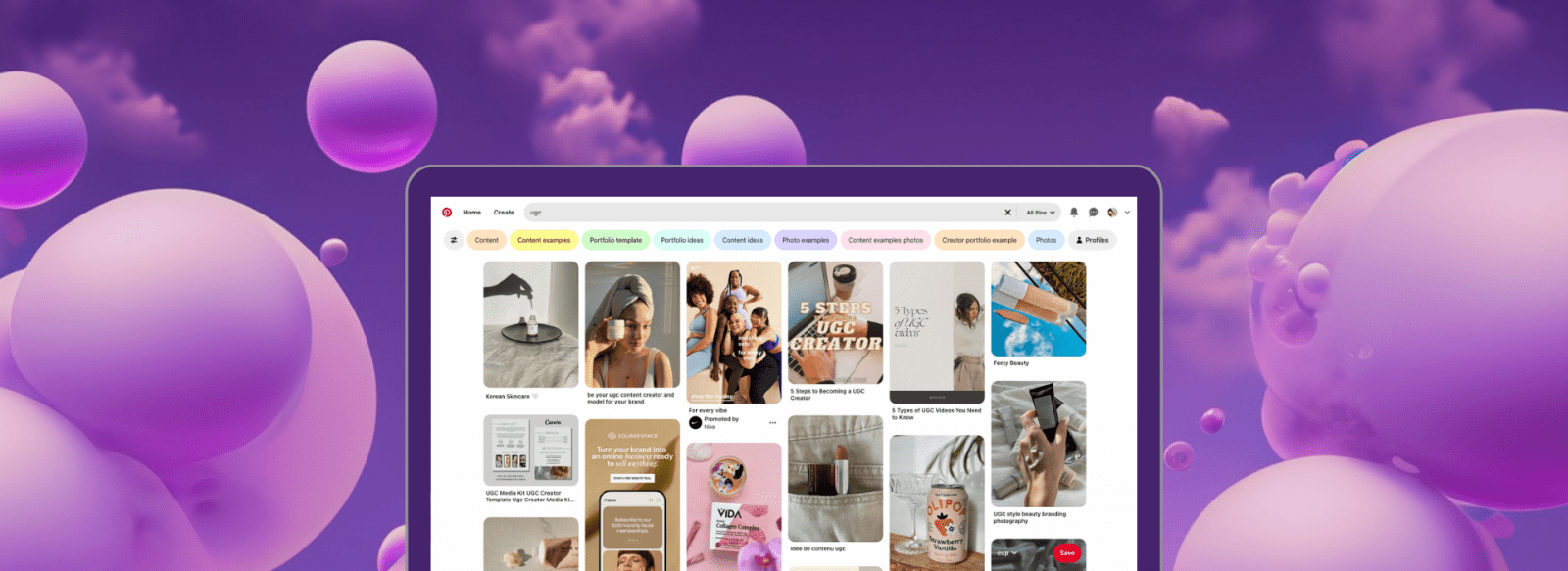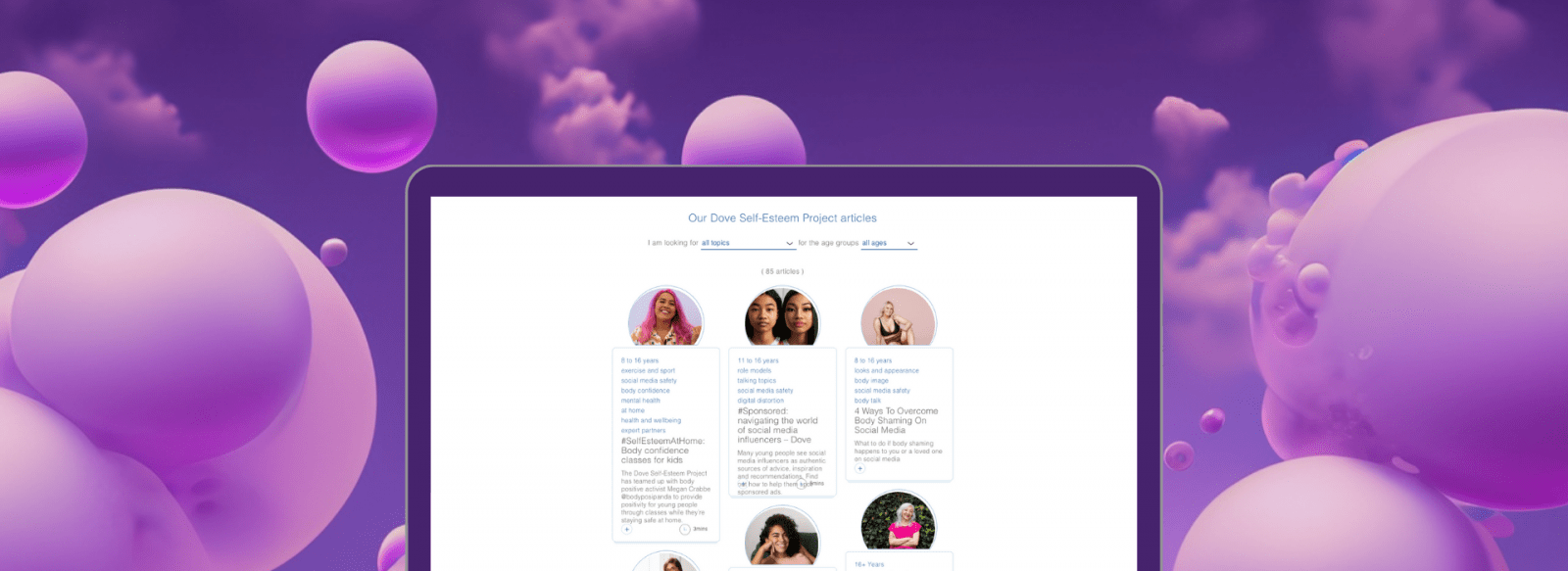In the digital age, the role of the consumer has evolved beyond simply purchasing products and services. Now, consumers play an integral part in shaping brand perceptions and influencing trends through user-generated content marketing.
As user-generated content gains traction, businesses, marketers, and influencers need to understand this concept and how it can be leveraged to their advantage. This article explores UGC's ins and outs, benefits and challenges, and how it transforms the digital and influencer marketing landscape.
Get 10% Discount on Your First Order at Contenteam!
Table of Contents
The Basics of User-Generated Content
UGC stands for User-Generated Content. It refers to any form of content, such as user or consumer-generated content: photos, videos, images, text, reviews, blog posts, podcasts, and more, created by users of a product or service rather than by the company or brand itself.
Unlike traditional advertising content produced by brands, UGC is where consumers trust content created by everyday users, providing a sense of authenticity and relatability. Brands use user-generated content to resonate more with existing and upcoming consumers.
Formats and Platforms of UGC

UGC comes in various formats and can be shared across a multitude of platforms. Popular formats include photos, videos, reviews, blog posts, podcasts, infographics, social media posts, and more. As for platforms, UGC can be found everywhere, from social media sites like your Facebook page, Instagram, Twitter, and LinkedIn to review sites like Yelp and TripAdvisor, blogs, forums, and even in the comments section of the e-commerce catalogues.
Encouraging Users to Create Content
Brands can encourage social media users to create UGC by running contests, marketing campaigns, providing incentives, or simply by asking. For instance, a company might run a photo contest on Instagram where users post photos of themselves using the company's product with a specific hashtag.
Alternatively, a brand's social media could offer a discount or a chance to be featured on the brand's official page as an incentive for users to post UGC.
Curating and Sharing UGC
Once UGC or valuable user-generated content campaign is on, brands can curate and share it on their platforms. This can be done in many forms, by reposting on their social media profiles, featuring it on their website, or incorporating it into their advertising campaigns.
By sharing UGC or leveraging user-generated content, brands can show appreciation for their customers, boost engagement, and enhance their credibility.
The Importance of User-Generated Content
User-Generated Content (UGC) has risen to prominence as an essential tool for brands and businesses looking to engage with their audiences more authentically and interactively. As we said, UGC covers any content posted by users on various online and social media platforms. It is particularly prevalent in online reviews and social media platforms, where users share their experiences and opinions freely.
The importance of UGC lies in its authenticity and relatability. Unlike traditional marketing for user-generated content platforms, which are usually created by professional advertisers, UGC is made by real people sharing their real experiences.
This makes the outcome highly relatable to other users, who are more likely to trust and be influenced by the user-generated content-driven opinions of their peers than by professional advertising.
In addition to its authenticity and relatability, UGC is also influential because it fosters a sense of community and customer engagement. When users create and share content about a brand's community or product, they are not just passive consumers but active participants. This can help foster a sense of loyalty as users feel more connected to the brand and each other.
Why Brands Love User-Generated Content

Brands love user-generated content for a variety of reasons.
UGC offers a cost-effective way to generate content. Instead of investing heavily in professional content creation, brands can leverage the content created by their users, using relevant user-generated content for any kind of PR or marketing campaign, which often requires little to no financial investment.
Secondly, UGC provides unique insights into how the product is incorporated into everyday life, preferences, and behaviors of a brand's audience.
By analyzing the types of content that users create and share across multiple social media platforms, brands can gain valuable insights into what their customers like, what they don't like, and what they are talking about. This can help brands to tailor their products, services, and other marketing campaigns to better meet the needs and preferences of their customers.
Lastly, UGC campaigns can help to build trust and loyalty. When users see that a brand values and shares the content generated by its users, they are likely to feel more valued and appreciated. This can help build trust and loyalty, which are vital to maintaining a solid customer base and driving long-term brand success.
The Difference Between Influencers and UGC Creators
Influencers and user-generated content creators are essential players in social media marketing, but they play different roles and offer different benefits.
Influencers have a large and engaged following on a social media platform. Brands often pay influencers to create and share content that promotes their products or services, hoping to reach the influencer's audience.
On the other hand, user-generated content creators are everyday users who create and share content about a brand or product.
They may not have a large following or influencer marketing claims yet, but their brand-generated content can still significantly impact. Brands may pay UGC creators to create content, but unlike influencers, the employee-generated content is typically shared on the brand's social media channels rather than the creator's.
While influencers can offer the benefit of reach and influence, UGC content creators provide the benefit of authenticity and relatability. Their content often appears more genuine and less like an advertisement, which can make it more effective at influencing behavior.
The Most Popular Social Media Channels to Start Your User-Generated Content Campaign

Harnessing User Reviews on Facebook
Facebook is a powerful platform for UGC, especially in the form of reviews. These reviews are often unsolicited, providing a genuine perspective on a product or service. Brands can harness these reviews by promoting positive ones and actively addressing any negative ones.
The ability to respond publicly to reviews allows brands to demonstrate their commitment to customer satisfaction. Additionally, brands can encourage satisfied customers to leave reviews, further augmenting their online presence with positive UGC.
Social proof is a crucial aspect of marketing, and user reviews on Facebook provide an excellent source of this. By highlighting and sharing positive reviews on their page, brands can leverage their customers' experiences to attract new customers. It's a simple yet effective way to build trust with your audience.
Moreover, reviews can also provide valuable feedback for brands. Real experiences shared by customers can offer insights into what is working well and what could be improved, allowing the brand to make necessary adjustments.
This two-way interaction between the brand and its customers can lead to better products or services, ultimately leading to happier customers and more positive reviews from future customers.
Maximizing the Power of UGC through Instagram Stories

Instagram Stories offer a fantastic opportunity for brands to showcase user-generated content.
The temporary nature of stories creates a sense of urgency and exclusivity, which can engage users more effectively. Brands can share user-generated photos or videos featuring their products or services, creating a dynamic and engaging story sequence that showcases real users and their experiences.
By featuring UGC in their stories, brands can foster a stronger sense of community, building brand awareness amongst their followers. This can create a positive feedback loop, where more users are motivated to share their experiences with the brand in hopes of being featured. It's an effective way to encourage more UGC creation and engagement with the brand.
Plus, Instagram Stories offer a variety of interactive features, such as polls or question stickers, which brands can use to further engage with their audience. This increases interaction rates and provides brands with valuable insights into their audience's preferences and opinions.
By strategically using these features in conjunction with their UGC campaigns and influencer marketing, brands can significantly boost their Instagram engagement, brand awareness, and visibility.
Leveraging Customer Testimonials on LinkedIn
LinkedIn, being a professional network, is a unique platform for UGC. Customer testimonials can be especially effective on the social media platform LinkedIn, as they professionally endorse a brand's products or services. Brands can share these testimonials on their LinkedIn page, showcasing the positive experiences of other professionals in their industry.
These testimonials can be used as powerful tools for establishing credibility and trust. When a professional endorses a product or service, it can significantly impact the purchasing decisions of other professionals in their network.
Furthermore, brands can use LinkedIn's publishing platform to share longer, more detailed customer success stories.
This can provide a deeper look at how the brand's products or services are being used in the professional world and the impact they're having. By combining these success stories with other forms of UGC, brands can build a strong presence on LinkedIn that appeals to a professional audience.
Using Pinterest Boards for UGC Collection

Pinterest is a highly visual platform, making it perfect for a UGC campaign. Brands can encourage users to share their own photos featuring the brand's products and can then curate these photos into dedicated Pinterest boards. This showcases the products in real-world situations and provides a space where users can draw inspiration from each other.
Creating a UGC board can also encourage more users to share their content. By seeing the brand actively showcasing user photos, more followers may be motivated to take and share their own pictures.
Brands can further encourage this by running contests or promotions, offering rewards for the best user-submitted photos.
Lastly, Pinterest boards can serve as a valuable resource for both the brand and its followers. Through data points, brands can gain insights into how their products are being used in the real world, and followers can gain inspiration and ideas from how others are using the products. It's a win-win situation that encourages continued user interest and UGC creation.
Promoting User-Generated Videos on YouTube
YouTube is an ideal platform for video-based UGC. Users can create reviews, unboxing videos, tutorials, and more. Brands can promote these videos on their own channel by sharing them directly or by creating playlists of user-generated content.
This provides the brand with valuable content and showcases real users interacting with the products, which can be more compelling to future customers than traditional advertising.
Furthermore, brands can engage with the creators of these videos, such as by commenting on the videos or sharing them on other social media channels and platforms. This can help to raise awareness, build relationships with influential members of the brand's community and encourage further UGC.
Brands can also run contests or campaigns to encourage customers' content and more UGC. For example, a brand might challenge its followers to create a video showcasing a unique use for a product or telling a story related to the brand. This generates more content for the brand and engages brand loyalists and the community in a fun and creative way.
Creating UGC Competitions on Twitter

Twitter's real-time nature makes it an excellent platform for UGC competitions. Brands can run contests on their social media channels that encourage users to share content related to the brand, such as photos, videos, or tweets about their experiences with the brand's products or services.
These contests can create a flurry of activity around the brand, raising its profile and engaging its community.
To increase the visibility of these contests, brands can create unique hashtags for users to use when submitting their entries. These hashtags make it easier for the brand to track entries and generate a stream of content that other users can follow and engage with.
After the contest is over, brands can share the winning entries and other notable submissions on their Twitter profile. This rewards the users who submitted the content and provides the brand with valuable UGC to share with its followers.
Enhancing Brand Perception with UGC on TikTok
TikTok is a platform built on user-generated content, and it offers unique opportunities for brands to engage with their audience. Brands can encourage their followers to create and share videos featuring their products or associated with their brand in some way.
These videos can then be shared on the brand's own TikTok account, showcasing the creativity of brand advocates, their community and the real-world usage of brand advocates and their products.
Brands can also create challenges or trends on TikTok, encouraging their followers to create their own video versions. This can quickly generate a large amount of UGC as users share their own takes on the challenge and engage with others doing the same.
Last but not least, TikTok's duet feature allows users to create videos alongside another user's video. Brands can use this feature to engage directly with their community, creating videos that their followers can duet with.
This boosts user-generated content and fosters a sense of connection between the brand and its followers.
Spotlighting User-Created Content on Snapchat
Snapchat's ephemeral nature can make it a unique platform for user-generated content. Brands can create Snapchat Stories that feature user-generated photos and videos, showcasing real users and their interactions with the brand. This can make posts on the brand's Snapchat account more engaging and relatable to its followers.
Top Brands Benefiting from User-Generated Content Campaigns

Airbnb: Harnessing the Power of Travel Stories
Airbnb, a global marketplace for unique accommodations, successfully leverages UGC to build trust and foster a sense of community.
They encourage hosts and guests to share their experiences through stories and photos, then featured on Airbnb's website and social media platforms.
By doing this, Airbnb can offer a more authentic and personal view of its offerings, which can be more compelling than traditional, corporate-sounding marketing content. These user-generated stories and photos provide valuable insights for the customers and make the users feel valued and part of the Airbnb community.
This effective use of the UGC campaign has helped Airbnb create a strong brand identity rooted in exploration and cultural exchange, resonating with its audience's desire for unique and authentic travel experiences.
Dove: Championing Body Positivity through UGC

Dove, a personal care brand, is well-known for its campaigns celebrating body positivity and self-esteem. Dove extends this messaging to its user-generated content, encouraging its audience to share their personal stories and experiences with body positivity on social media platforms.
These user-generated stories are then shared by Dove, creating a platform for diverse voices and experiences. By interacting with these creators, Dove shows its support and commitment to its audience's well-being and self-esteem.
Such a strategy allows Dove to connect more deeply with its audience, fostering a supportive and inclusive community around its brand.
The use of UGC in this way aligns perfectly with Dove's brand values and helps to strengthen its position as a brand that champions natural beauty.
Spotify: Encouraging User Engagement through Personalized Content
Music streaming platform Spotify cleverly uses a UGC campaign to increase user engagement and promote its platform. Towards the end of each year, Spotify offers users the chance to create personalized playlists and «Top Listened» charts based on their listening habits, which can then be shared on social media.
This form of user-generated content provides users with a fun and personal summary of their year in music and serves as a promotional tool for Spotify. When users share these personalized charts and playlists, it exposes Spotify to a broader audience.
The strategy is a win-win for both Spotify and its users. It's an engaging way for users to interact with the platform and share their musical tastes while also driving new user growth and engagement for Spotify.
All these case studies demonstrate the potential of UGC as a marketing channel and a powerful tool for brand promotion and audience engagement.
By integrating user-generated content into their marketing strategies and social channels, these brands have created authentic, engaging content that resonates with their audience and aligns with their brand values.
Amplifying Diverse Voices and Perspectives
UGC enables brands to amplify diverse voices and perspectives. In an era where inclusivity and diversity are paramount, UGC offers a way for brands to showcase a wide range of customer experiences.
This can help brands resonate with a broader audience and foster a more inclusive brand community.
Legal Implications of UGC Content

User-Generated Content, while advantageous for brands, carries potential legal implications. Intellectual property rights, privacy concerns, and defamation issues can arise if UGC is used improperly. Brands should acquire explicit permissions before using UGC in their marketing efforts to protect themselves legally.
Copyright infringement is a common legal issue connected with UGC. If a brand uses content created by a user without their explicit permission, they may be held liable for copyright infringement. To mitigate this risk, brands often include terms and conditions that grant them the right to use UGC for promotional purposes.
Furthermore, the use of UGC may infringe upon a person's right to privacy, especially if the content includes personal information or images.
Brands should exercise caution when using such content and ensure they have the necessary permissions to do so. Also, user-generated content should be monitored to avoid spreading false information or defamatory content that could potentially harm individuals or other businesses.
The Impact of UGC Content on SEO
User-generated content can significantly impact a brand's Search Engine Optimization (SEO) efforts. UGC formats, such as reviews, comments, and blog posts, can generate fresh content that search engines value. This can lead to improved search rankings and increased visibility for the brand online.
Moreover, user-generated content can also help in keyword optimization. User reviews and comments often include relevant keywords that potential customers might use in their search queries. This can help brands to rank higher for these keywords and attract more organic traffic to their site.
However, brands should also be mindful of the potential negative impact of UGC on their SEO. Negative reviews and inappropriate user content can harm a brand's online reputation and search rankings. It's essential for brands to monitor and manage UGC effectively to reap its SEO benefits.
The Dark Side of User-Generated Content

Despite its numerous benefits, user-generated content also comes with some challenges and potential pitfalls that brands must navigate.
Quality Control and Combating Misinformation
Maintaining quality control can be challenging with UGC. Since anyone can create UGC, there's always a risk of misinformation, inappropriate content, or off-brand messages. Brands need to monitor UGC closely and have a strategy in place to deal with any potential issues.
Copyright Infringement Challenges and Solutions
Another challenge with UGC is the potential for copyright infringement. Brands must ensure that they have the necessary permissions to use the visual UGC content they share.
This often involves getting explicit consent from the content creator, which can be time-consuming but is essential to avoid legal complications.
Privacy Concerns and Finding the Balance
Privacy is a significant concern with user-generated content. While many users willingly share content, others may not want their content used by brands.
Brands need to balance the use of user generated content UGC with respecting users' privacy rights, which often means obtaining explicit consent before using user content.
Consequences of Mishandling UGC Content for Brands
Mishandling user-generated content can have serious repercussions for brands, ranging from damaged reputation to legal consequences. It's vital for brands to handle UGC responsibly, following all relevant laws and ethical guidelines.
Conclusion
UGC holds enormous potential for brands, offering a cost-effective, engaging, and authentic way to connect with consumers.
However, brands must understand its nuances, benefits, and challenges to leverage UGC effectively. With a strategic approach, social media UGC companies can harness the power of UGC to build trust, foster brand loyalty, and drive growth.
FAQs

What's the meaning of UGC?
UGC stands for User-Generated Content. It refers to content created by users of a product, brand, or platform rather than by the brand, product pages or platform collecting user or consumer-generated content or consumer collecting user-generated content for itself.
This content could take the form of videos, photos, text, reviews, and more, and it offers an authentic perspective of real users' experiences.
How does user-generated content work?
UGC works by leveraging the creativity and experiences of a brand's user base. Users create content related to a brand or product, often because they genuinely enjoy the product or have a relationship with the brand.
This content is then shared by the brand on its platforms, providing authentic and relatable info that can resonate with other users or potential customers.
What does UGC mean for social media?
In the context of social media, UGC is highly influential. It serves as a form of social proof, showing potential and existing customers, that real people are using and enjoying a brand's products or services.
This can be more convincing than traditional advertisements or brand-created content. It also fosters a sense of community and engagement, as social media users see their content being valued and shared by the brands they love.
What is UGC in TikTok?
On TikTok, UGC takes the form of user-created videos. These might be videos showcasing a product, participating in a brand-sponsored challenge, or providing a review or testimonial.
TikTok's format encourages creativity and originality to share user-generated content, making it a particularly effective platform for creating UGC. Brands on TikTok often share user-created videos on their own account or use them in their marketing materials.





